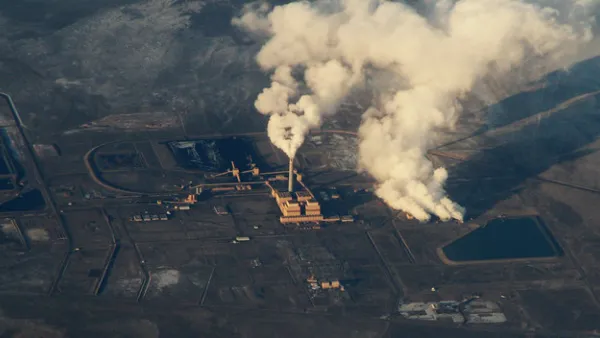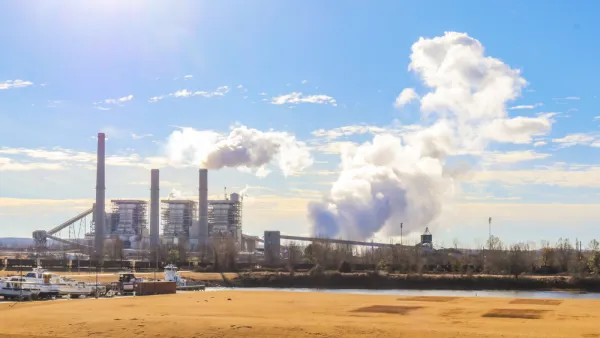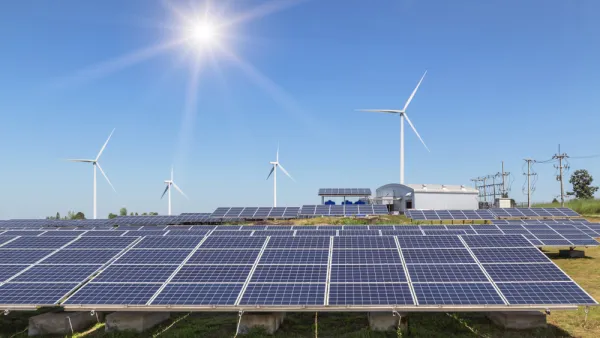A bill to phase out coal-powered electricity by 2030 is advancing in the legislature. It would also double the state's renewable portfolio standard to 50 percent by 2040 for Oregon's two largest utilities.
"The bill, dubbed the Clean Electricity and Coal Transition Plan [House Bill 4036], passed through the Oregon House on February 15 by a vote of 39-20, and would require both PacifiCorp and Portland General Electric (PGE) — Oregon’s two largest, investor-owned utilities — to stop using coal in their energy mix by 2030," writes Natasha Geiling, climate reporter for ThinkProgress.
"The Clean Electricity plan was crafted by bringing diverse parties to the table -- the investor owned electric utilities, environmental and consumer organizations, and the renewable energy industry -- and the vote reflected the wide support of the bill," states the Feb. 15 Sierra Club press release.
While the largest source of power (43 percent) in the Beaver State is entirely renewable and carbon-free, not all hydropower qualifies under the 2007 Renewable Portfolio Standard (RPS) [see hydropower provisions [(PDF)], which "requires the largest utilities in Oregon to provide 25 percent of their retail sales of electricity from newer, clean, renewable sources of energy by 2025," according to the RPS webpage. HB 4036 would increase the renewable mix to 50 percent by 2040 for PGE and Pacific Power.
California's Renewable Portfolio Standard, adopted last year, requires all utilities to generate 50 percent of electricity from renewable sources 10 years earlier—by 2030. Hawaii passed even stronger mandates in legislation last year calling for 100 percent renewable electricity by 2045, while Vermont set a requirement of 75 percent renewable power by 2032, according to the U.S. Energy Information Administration.
"The proposal applies only to Pacific Power and Portland General Electric, who together serve about 70% of Oregon’s electricity needs," according to a fact sheet [PDF] provided by proponents of the plan, which includes both utilities and environmental groups. "It does not change existing requirements on consumer-owned utilities."
But the strongest part of the bill is phasing out coal power, not only the largest source of greenhouse emissions in the United States, but also one of the largest contributors to air pollution. And with President Obama's Clean Power Plan Rule in jeopardy as a result of a recent Supreme Court ruling, it may take more state action to reduce the use of coal power.
“While Oregon has just one coal-fired power plant in the state set to retire in 2020, we are not generating all the coal in the state that we use, but we are consuming it. This bill takes responsibility not just for what we generate but what we consume,” Amy Hojnowski, senior campaign representative with the Sierra Club, told ThinkProgress.
Natural gas supplies 12 percent of the current energy mix. "Solar and wind, by contrast, make up a much smaller slice of the pie, accounting for just .02 percent and 5.2 percent respectively," notes Geiling,
Oregon law calls for achieving "greenhouse gas levels that are at least 75 percent below 1990 levels," according to Keep Oregon Cool.
Had utilities not agreed to the plan, environmentalists were ready to go to the ballot with two initiatives that would have required the utilities to meet similar goals.
Hat tip to Fred Heutte, Sierra Club International Climate and Energy
FULL STORY: Oregon Set To Pass One Of The Most Ambitious Environmental Bills In Decades

Analysis: Cybertruck Fatality Rate Far Exceeds That of Ford Pinto
The Tesla Cybertruck was recalled seven times last year.

National Parks Layoffs Will Cause Communities to Lose Billions
Thousands of essential park workers were laid off this week, just before the busy spring break season.

Retro-silient?: America’s First “Eco-burb,” The Woodlands Turns 50
A master-planned community north of Houston offers lessons on green infrastructure and resilient design, but falls short of its founder’s lofty affordability and walkability goals.

Test News Post 1
This is a summary

Analysis: Cybertruck Fatality Rate Far Exceeds That of Ford Pinto
The Tesla Cybertruck was recalled seven times last year.

Test News Headline 46
Test for the image on the front page.
Urban Design for Planners 1: Software Tools
This six-course series explores essential urban design concepts using open source software and equips planners with the tools they need to participate fully in the urban design process.
Planning for Universal Design
Learn the tools for implementing Universal Design in planning regulations.
EMC Planning Group, Inc.
Planetizen
Planetizen
Mpact (formerly Rail~Volution)
Great Falls Development Authority, Inc.
HUDs Office of Policy Development and Research
NYU Wagner Graduate School of Public Service




























